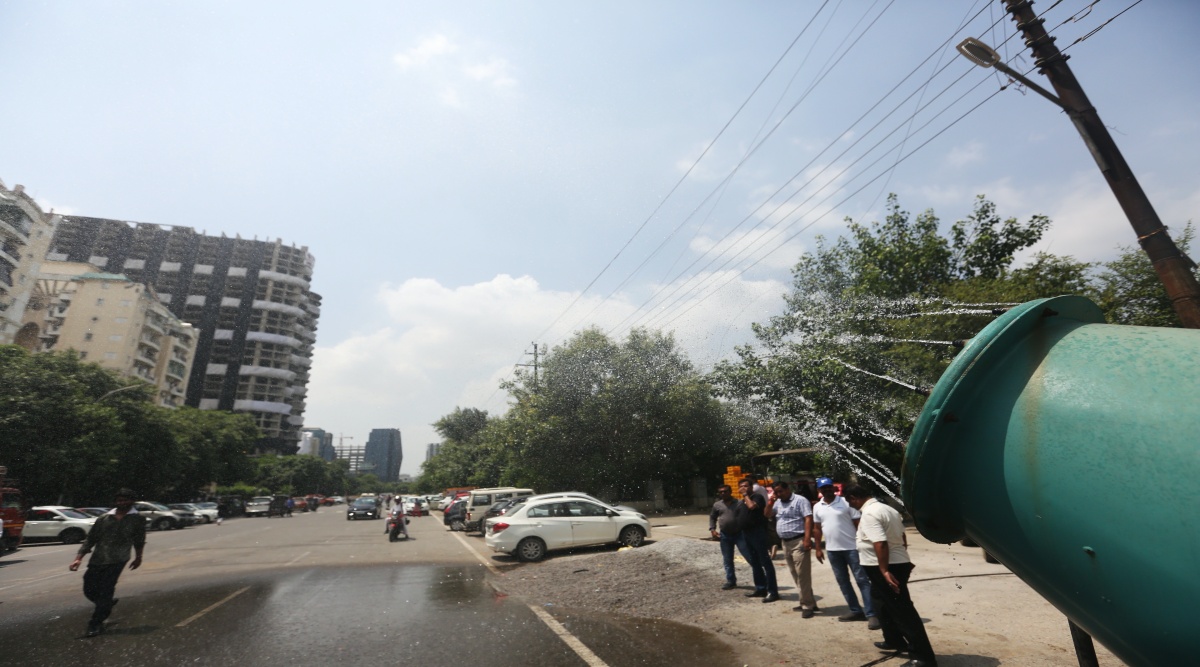With the Supertech twin towers about to be demolished, doctors are warning people not to go near the immediate vicinity immediately afterward, especially those who may have respiratory problems. Experts say the demolition is likely to increase particulate matter, PM10, in and around the site, which can cause allergic reactions in the healthy and aggravated symptoms in those with respiratory illnesses.
How can demolition-related pollution affect our health?
Children and people with pre-existing respiratory conditions are likely to be hit the hardest due to rising pollution levels. “People with asthma, COPD (chronic obstructive pulmonary disease) or fibrosis can find it difficult to breathe when the dust level skyrockets. But it can also cause acute coughing, wheezing and shortness of breath in healthy people,” said Dr. Nevin Kishore, chief of bronchology and respiratory medicine at Max Hospital.
He also said that people with dust allergies are likely to experience aggravated symptoms. “Children are more vulnerable as their lungs develop. Other than that, it is well documented that 10 to 15 percent of children in Delhi have existing allergies. They may also experience allergic symptoms,” said Dr. Kishore.
He said that to protect themselves, people should stay away from the area for several hours after the demolition and even then go outside only with good-quality masks or a damp cloth, covering the mouth and nose.
What is likely to happen?
Since only the bare structures of the tower have been built, the rubble is likely to be composed primarily of concrete. “Building debris, especially without plaster or wood, is likely to increase the levels of coarse particulate matter or PM10 in the air. The increase in PM2.5, penetrating deeper into the respiratory system and other organs, is often caused by burns. Coarse particles can cause upper respiratory symptoms,” said Dr. Sachidanand Tripathi, a professor at the Indian Institute of Technology, Kanpur, and coordinator of the National Clean Air Program.
However, since it’s the rainy season, the debris is likely to settle soon with a rain or two. “The dust would have stayed suspended longer in the summers. Now, you can stay for up to a week. But, and I’m sure there’s a plan for it, the debris needs to be removed from the area as soon as possible because it’s a residential area and the dust can re-suspend in the wind if it’s not removed,” he added. .
Can the sudden increase in PM10 levels lead to long-term problems?
Dr. Karan Madan, associate professor of pulmonary medicine at the All India Institute of Medical Sciences, said that even healthy people can experience asthma-like symptoms.
“The sudden increase in particle levels can lead to what we call reactive airway dysfunction, a condition in which a person develops asthma-like symptoms after exposure to something noxious, as opposed to asthma triggered by an allergen. . This can also happen to absolutely healthy people. The condition is well documented in firefighters and others present at the World Trade Center; of course, that was an uncontrolled scenario and dust levels will be controlled here,” said Dr. Madan.
When asked if the condition dissipates as dust particles are reduced, he said no. “The effects of sudden exposure to dust can be long lasting. It won’t last a lifetime, but it will take time to heal,” he said.
!function(f,b,e,v,n,t,s)
{if(f.fbq)return;n=f.fbq=function(){n.callMethod?
n.callMethod.apply(n,arguments):n.queue.push(arguments)};
if(!f._fbq)f._fbq=n;n.push=n;n.loaded=!0;n.version=’2.0′;
n.queue=[];t=b.createElement(e);t.async=!0;
t.src=v;s=b.getElementsByTagName(e)[0];
s.parentNode.insertBefore(t,s)}(window, document,’script’,
‘https://connect.facebook.net/en_US/fbevents.js’);
fbq(‘init’, ‘444470064056909’);
fbq(‘track’, ‘PageView’);
.
